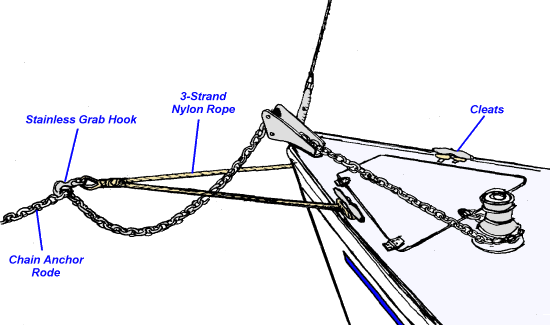dsteele1
New Member
- Apr 27, 2008
- 325
- Boat Info
- Previous: 260 Sundancer 2006
- Engines
- 350 MAG MPI Mercruiser w/Bravo III Drive
I've finally experienced the "Honey, why is that boat honking it's horn" while we were both in the cabin while anchored in a mud bottom lake in a nice secluded cove in 25 mph winds. :wow::wow::wow:
Went topside to find we had dragged anchor about 500 feet and got within 10 feet of the shore. Luckily we didn't snap off the stern drive or hit bottom. :smt101:smt101:smt013
We have the standard delta style anchor that Sea ray provides and it has worked fairly well in the mud bottom - that was until we experienced the 25 mph winds yesterday.
So what do you guys suggest? I have a bruce style 2nd anchor but that doesn't seem to do any better. I do have a 6' chain I haven't used yet... :huh: :smt100
P.S. I forgot to mention that we got hit by monster 1 foot waves while in the cabin from I suspect a 48 Sundancer that went by the cove. The swim platform was smacking the water and the bow lifted a good foot or two which probably popped the anchor out of the mud. I was too busy trying to get the 12VDC outlet in the cabin to make a consistent connection to the power supply for my laptop to realize what was going on topside.
Went topside to find we had dragged anchor about 500 feet and got within 10 feet of the shore. Luckily we didn't snap off the stern drive or hit bottom. :smt101:smt101:smt013
We have the standard delta style anchor that Sea ray provides and it has worked fairly well in the mud bottom - that was until we experienced the 25 mph winds yesterday.
So what do you guys suggest? I have a bruce style 2nd anchor but that doesn't seem to do any better. I do have a 6' chain I haven't used yet... :huh: :smt100
P.S. I forgot to mention that we got hit by monster 1 foot waves while in the cabin from I suspect a 48 Sundancer that went by the cove. The swim platform was smacking the water and the bow lifted a good foot or two which probably popped the anchor out of the mud. I was too busy trying to get the 12VDC outlet in the cabin to make a consistent connection to the power supply for my laptop to realize what was going on topside.
Last edited:








